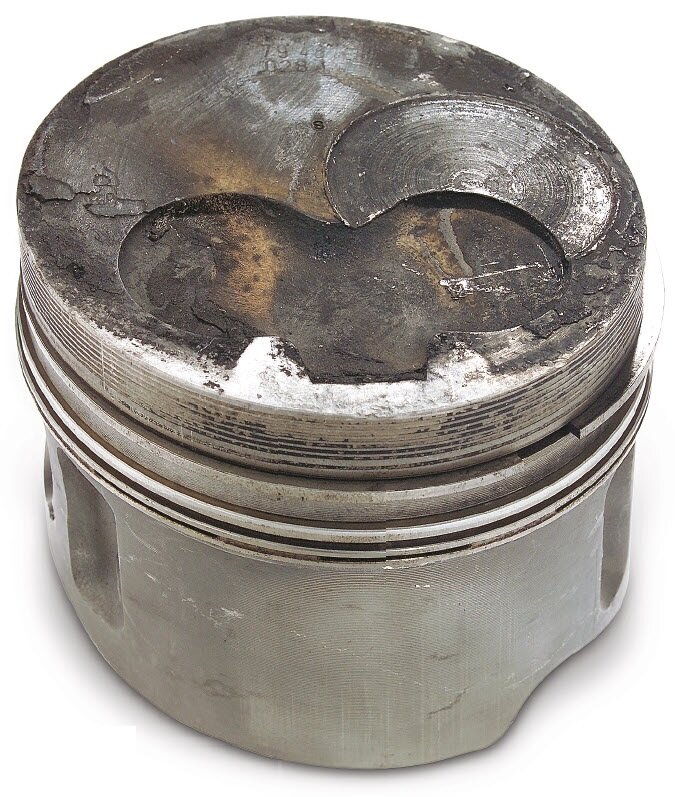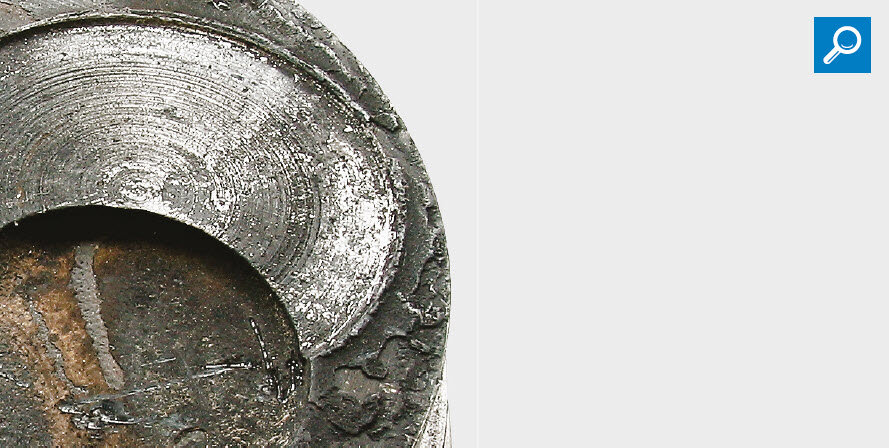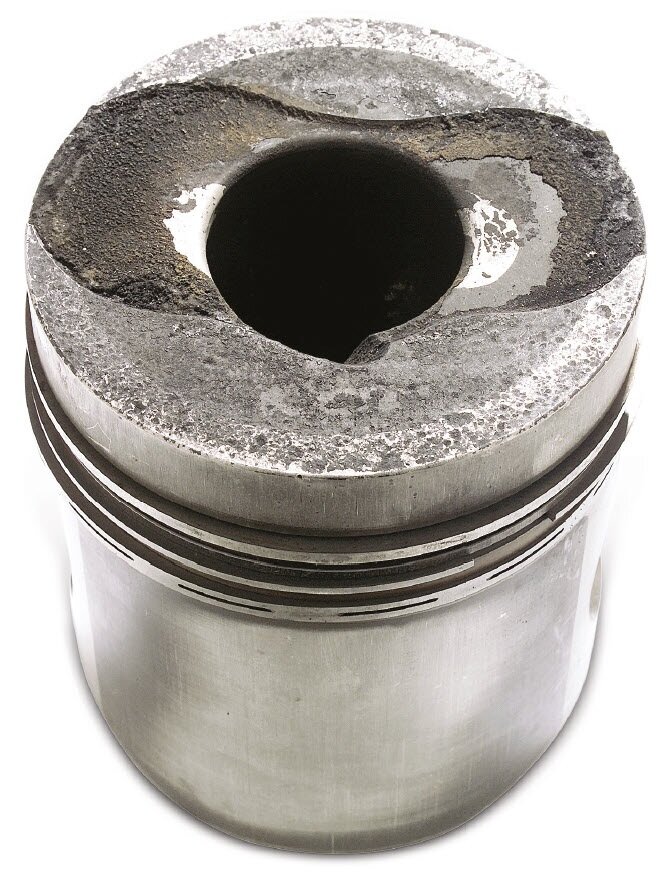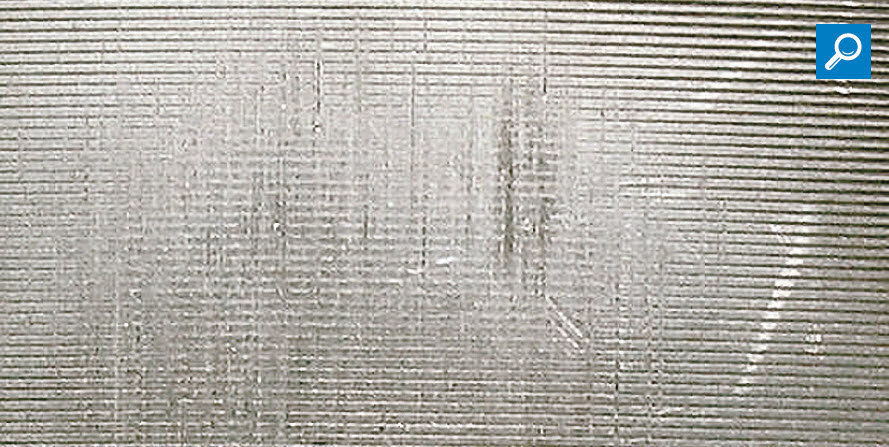Impact marks on the piston head (diesel engines)
DESCRIPTION OF THE DAMAGE
- Severe impact marks on the piston head (Fig. 1). Nearly all oil carbon deposits removed.
- Scarring and oil carbon deposits pressed into the piston crown.
- Severe wear on the piston rings, particularly on the oil control ring.
- Imprint of the swirl chamber on the front edge of the piston crown (Fig. 2).
- Imprint of the valve on the right-hand side of the crown.
- First indicators of initial dry running damage due to lack of lubrication on the piston skirt (Fig. 4).




DAMAGE ASSESSMENT
The pistons have struck against the cylinder head/swirl chamber and one of the valves during operation. There have been no fractures yet as a result of these violent impacts. However, the nature of the wear on the piston rings and the piston skirt indicates that one consequence of these impacts has been abnormal combustion due to fuel flooding.
The striking of the piston results in vibrations on the cylinder head. This causes the injection nozzle to vibrate, and it is then unable to hold the pressure when closed and injects fuel into the cylinder in an uncontrolled manner. This causes fuel flooding, which damages the oil film. This damage leads to a higher level of mixed friction and therefore to wear on the piston rings and increased oil consumption. The characteristic damage caused by unburned fuel does not arise until the oil film is impaired by the fuel to such an extent that the piston is running with insufficient lubrication (refer to the chapter entitled “Dry running damage due to lack of lubrication caused by fuel flooding”).
In the initial stages the piston skirt is damaged to a lesser degree, as it is regularly supplied from the crankshaft drive with new oil that is still capable of providing lubrication. Once the abraded particles from the moving area of the pistons mix with the lubricating oil and the lubricating oil loses its load-bearing ability as a result of oil dilution, the wear will spread further
The striking of the piston results in vibrations on the cylinder head. This causes the injection nozzle to vibrate, and it is then unable to hold the pressure when closed and injects fuel into the cylinder in an uncontrolled manner. This causes fuel flooding, which damages the oil film. This damage leads to a higher level of mixed friction and therefore to wear on the piston rings and increased oil consumption. The characteristic damage caused by unburned fuel does not arise until the oil film is impaired by the fuel to such an extent that the piston is running with insufficient lubrication (refer to the chapter entitled “Dry running damage due to lack of lubrication caused by fuel flooding”).
In the initial stages the piston skirt is damaged to a lesser degree, as it is regularly supplied from the crankshaft drive with new oil that is still capable of providing lubrication. Once the abraded particles from the moving area of the pistons mix with the lubricating oil and the lubricating oil loses its load-bearing ability as a result of oil dilution, the wear will spread further
POSSIBLE CAUSES FOR THE DAMAGE
- Incorrect piston protrusion dimension. The piston protrusion was not checked or corrected during engine reconditioning.
- Connecting rod bush bored eccentrically during replacement.
- Eccentric regrinding of the crankshaft.
- Eccentric reworking of the bearing counter bore (when resinking the crankshaft bearing caps).
- Installation of cylinder head gaskets with insufficient thickness.
- Oil carbon deposits on the piston head and resulting restriction or bridging of the gap dimension.
- Incorrect valve timing caused by incorrect adjustment, chain stretching or a slipped toothed belt.
- Differing connecting rod lengths.
- Excessive reworking of the cylinder head mating surface and the resulting shift in the valve timing. (The distance between the driving pinion/sprocket and the driven pinion/sprocket changes. Depending on the design of the chain or belt adjustment mechanism, it may not be possible to correct this.)
- New valve seat rings have been installed, but care was not taken to ensure that they are correctly positioned. If the valve seat surface is not positioned deeply enough in the cylinder head, the valves will not be recessed correctly in the cylinder head and will protrude too far as a result.
- Over-revving the engine. The valves do not close in time due to the increased inertia forces and strike against the piston.
- Excessive clearances in the connecting rod bearing or a worn-out connecting rod bearing, particularly in conjunction with over-revving when driving downhill.